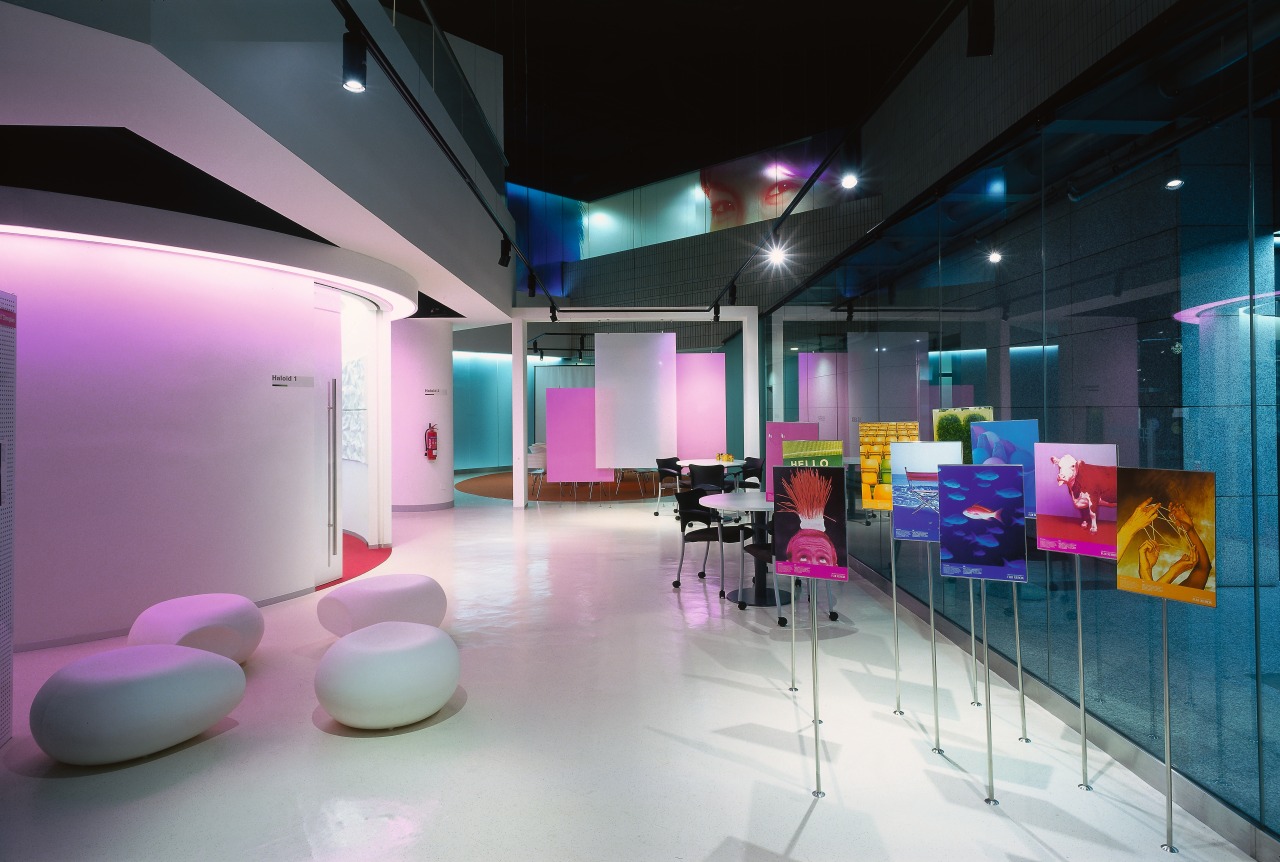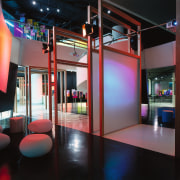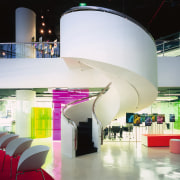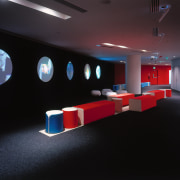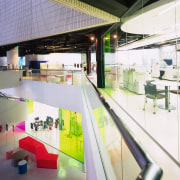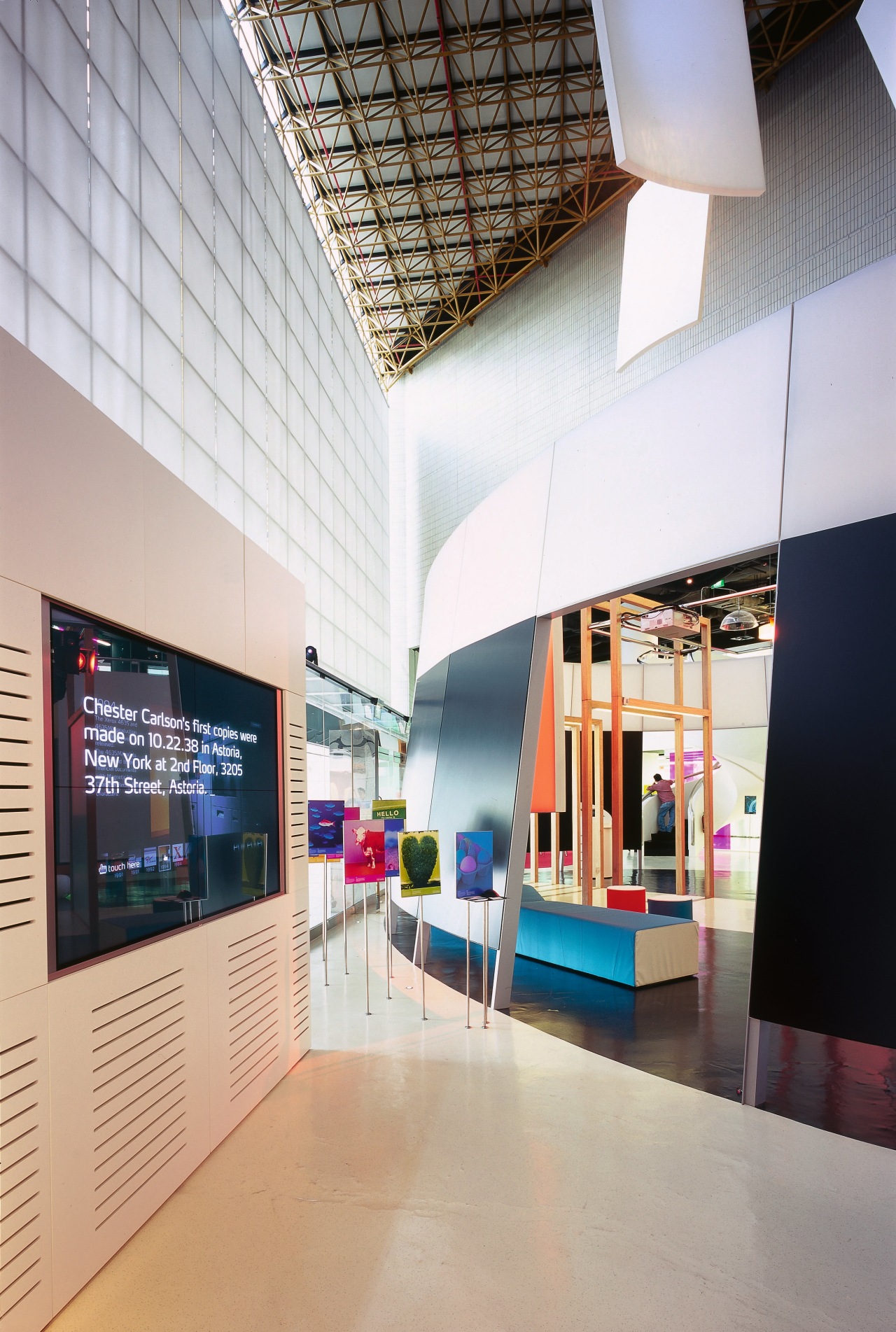Colour, drama, pulse
Vibrant elements such as phased lighting and textural wallcoverings make up an interior design kit that can be adapted for a variety of locations
In an era of globalisation, companies often seek a balance between creating a powerful brand and catering to the needs of individual clients. Central to this conundrum is the interface between the company and its clients how do you create a space that is both generic and personal?
As part of its marketing strategy, Fuji Xerox has created business-focused areas known as epicenters, located in Singapore, Tokyo, Shanghai and Sydney.
Designer Melinda Huuk says the centres showcase Fuji Xerox's products and services with the emphasis on engagement and collaboration with its business clients.
"The challenge was to create a consistent design across four different locations," she says.
"Our solution was to design a kit of parts that could literally be dropped into any location, independent of existing architecture," she says.
The kit essentially has two facets key elements such as lighting effects and the division of each location into zones.
In the Singapore Fuji Xerox epicenter featured here, customers enter the space through the Transition Spine. This comprises a series of timber arches bordered with lights, activated by motion senses. Huuk says the use of timber suggests a link with the past and provides an interesting contrast to the multiple uses of glass throughout the space. For example, coloured glass denotes specialist areas and opaque glass is used to screen areas not open to the public.
The Transition Spine features a number of key elements, such as a group of stylised graphics perched on steel rods. Called shoal clusters, they feature artwork created by international branding agency Landor Associates, says Huuk.
"Every cluster, with its collection of bright abstracted artwork, depicts a facet of Fuji Xerox's innovative print capability," Huuk says.
Another striking element is the five screens which appear like paper elements tumbling to the ground. From top to bottom, light hits each screen in turn, changing a different colour as it does so. When it hits the final screen, an introductory video begins playing.
At the heart of the epicenter is the Immersion Zone, where all clients are directed upon arrival. From here they are guided to specific areas, such as the equipment room on the ground floor. This zone has partitions to hide equipment not relevant to that client.
"Curved acrylic screens are mobile and are used to personalise the customer journey. This prevents the impression of a sea of hardware by defining a smaller, more intimate volume of space," says Huuk.

Other customers may be taken to the large theatre or to one of the hive-like formal meeting rooms. There are also a number of informal meeting areas throughout the space.
"The variety of scale from dramatic spaces like the theatre to more intimate one-on-one areas acknowledges that clients not only have different needs, they are also at different phases in their relationship with Fuji Xerox," says Huuk.
In addition to recognising the difference in customer expectations, Huuk says the kit of parts can be adapted to any location.
In the Singapore epicenter, two large existing staircases, which have a dominating presence, have been incorporated into the scheme, Huuk says.
"Their sweeping curves provide a ribbon effect. This echoes the play on paper in other key visual elements such as the tumbling screens."
Credit list
Designers
Project management
Graphic design consultant
Mechanical and electrical engineer
Story by: Trendsideas
Home kitchen bathroom commercial design
9 tile shapes and finishes that think outside the square
Reflection and repose
White cloud, blue sky
